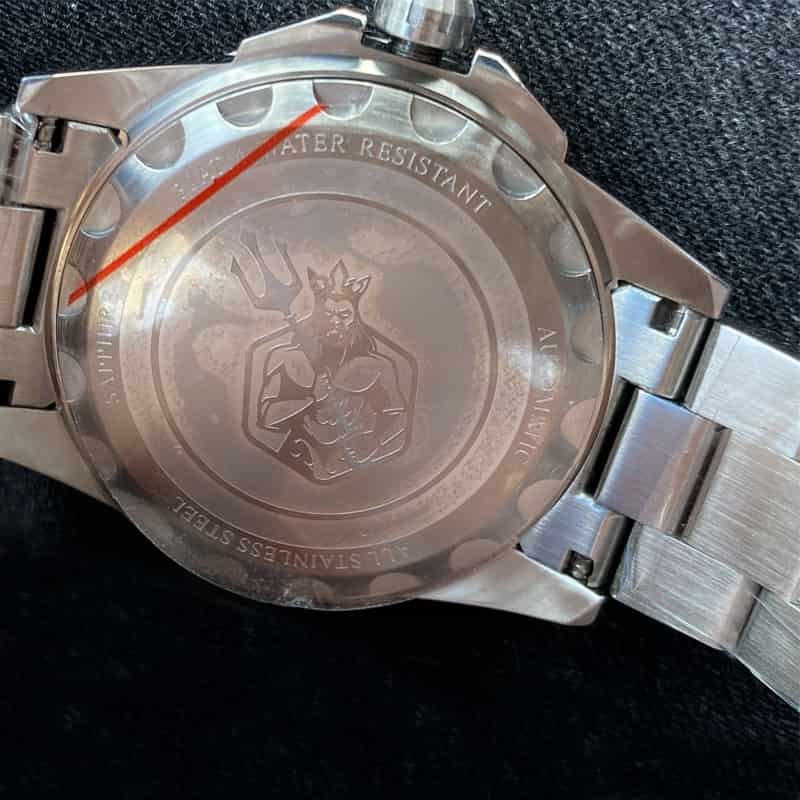Every product is carefully selected by our editors. If you buy from a link, we may earn a commission.
If 36mm is the new 40mm, what's driving the drop? Pocket Watch Wrist Watch

Even just a couple decades ago, if you bought a men’s wristwatch, it was probably small. Really small. Like, just-a-smidge-bigger-than-a-Kennedy-half-dollar small. For nearly as long as men have been wearing watches on their wrists, watches ranged from about 33mm to 36mm, and those that were any larger were stylistic outliers and chunky sports watches. In fact, some large watch designs from way back were derided for being unnecessarily big.
Since then, times have changed, but the virtues of a small watch remain. If you're already a believer in a restrained timepiece silhouette, it's a good time to be alive as that's the trend du jour among collectors and watchmakers. If you're on the fence, wondering what's behind the trend, or looking for ammunition for your next argument with a big-watch devotee ... here's why we think small watches are the bee's knees. See our full small watch guide for our favorites.
A couple of decades ago, watches got beefed up. The 40mm to 42mm range became “standard,” and a chronograph or dive watch would likely be a few millimeters bigger still. Hulking sports watches from the likes of Breitling and Panerai were status items in the ’90s and ’00s and, the popularity of sports models from big brands like Rolex led other makers to creep up case sizes — even if said watches were not actually sport models or did not require a brawny case for any functional purpose. The consensus among some prominent watch folk is that this case inflation was a holdover from an era of conspicuous consumption.
Watch collectors have come to love the authentically small case sizes of yore.
This doesn’t mean that the large watch-wearing individual is a braggart or is prone to compensate (as the argument from small-watch fans often goes), but it does mean the big and bold watch had become the norm, which as a result seems to have, in some instances, spurred a bout of neuroticism in the modern watch buyer. There’s an abundance of guides online to “finding the right size watch for your wrist” (here's one, for example) and forum posts inquiring as to whether or not a watch will fill out an enthusiast’s wrist — wrist circumferences no doubt having been taken with a tape measure and committed to memory. The subtext? Anything too small will look like a "ladies watch."
Our advice, first and foremost, is to buy whatever the hell you like regardless of size. A second bit of advice is to consider embracing the small-watch movement. The vintage watch market has been booming for some time, and watch collectors have come to love the authentically small case sizes of yore.
Watchmakers today have seemingly taken notice, offering dress and sports watches that are closer in size to their forebears. Tudor’s considerably downsized Black Bay 54 for 2023 is a prominent example in dive watch form, coming in at 37mm — the same diameter as the Tudor Submariner released in 1954.
So what exactly do you get out of a smaller watch? Comfort, for one. A substantially-sized watch is an ever-present weight upon your wrist, and while some tout “heft” as a signifier of quality or actually enjoy the weight, a truly comfortable watch is one that feels like it disappears on your wrist.
Thinner, smaller watches are just inherently lighter by virtue of using less material. Further, if your wrist shape is more round than it is flat, a smaller diameter watch will sit more flush with your wrist since there’s less flat surface area.
An argument about aesthetics can be made, too. Large watches have a lot of empty space to deal with, both on the case and dial. Taller, thicker watches tend to have cases that feel slab-sided, while watches large in diameter often have dials with an overabundance of negative space, making the watch feel empty and platter-like. When a case is unnecessarily beefed up in size simply to suit consumer demands, these design missteps become all the more egregious.
Celebrate the craftsmanship required to make a tiny, intricate piece of clockwork.
Moreover, smaller watches tend to feel more refined. Watches that are gratuitously big don’t feel as purposefully made; hell, making a big watch is relatively easy. But small watches require more planning and working within more constraints. Complex movements need to be engineered to be slim and compact. Cases need to be thin but still strong enough to resist shocks and water pressure. Tolerances between the dial, hands and crystal need to be as tight as possible.

Best Automatic Watch Ostensibly, this is what timekeeping enthusiasm is supposed to be about: celebrating the craftsmanship required to make a tiny, intricate piece of clockwork, not appealing to tiresome notions of excess and visibility. A smaller, more discrete watch might not garner as much attention as a shining, hulking wrist piece, but that shouldn’t be why you buy a nice watch in the first place. You should buy it for you.